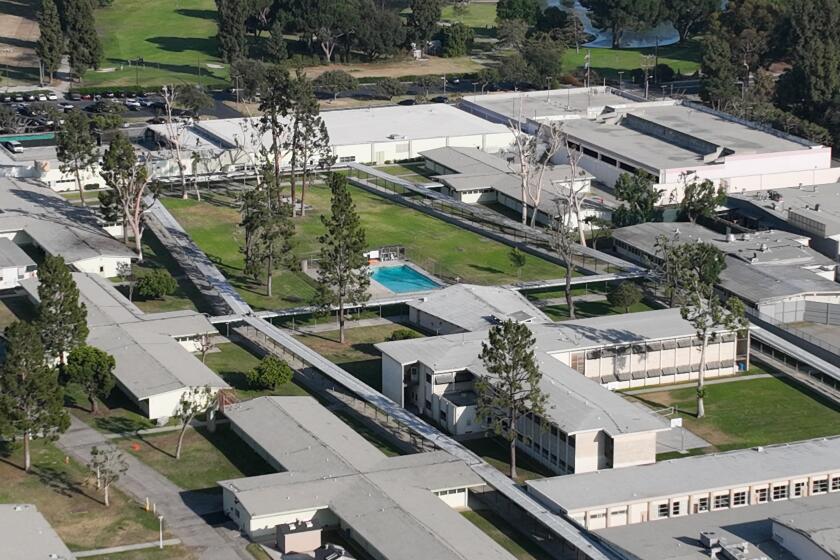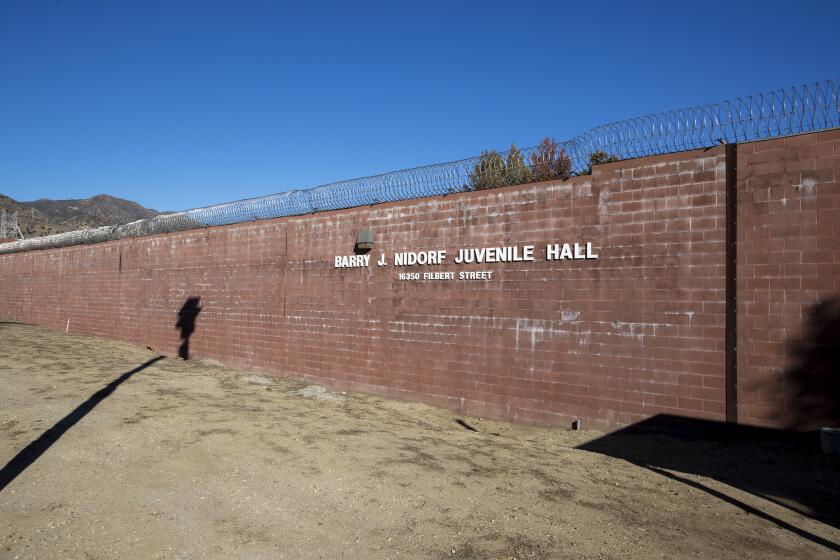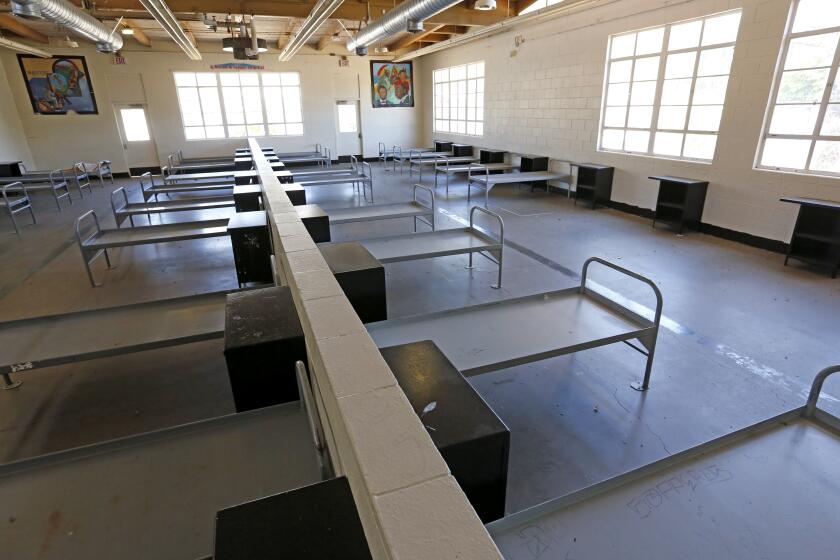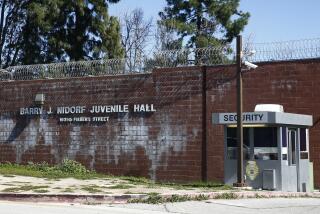Editorial: No more last chances. Shut down L.A. County’s juvenile hall shell game now
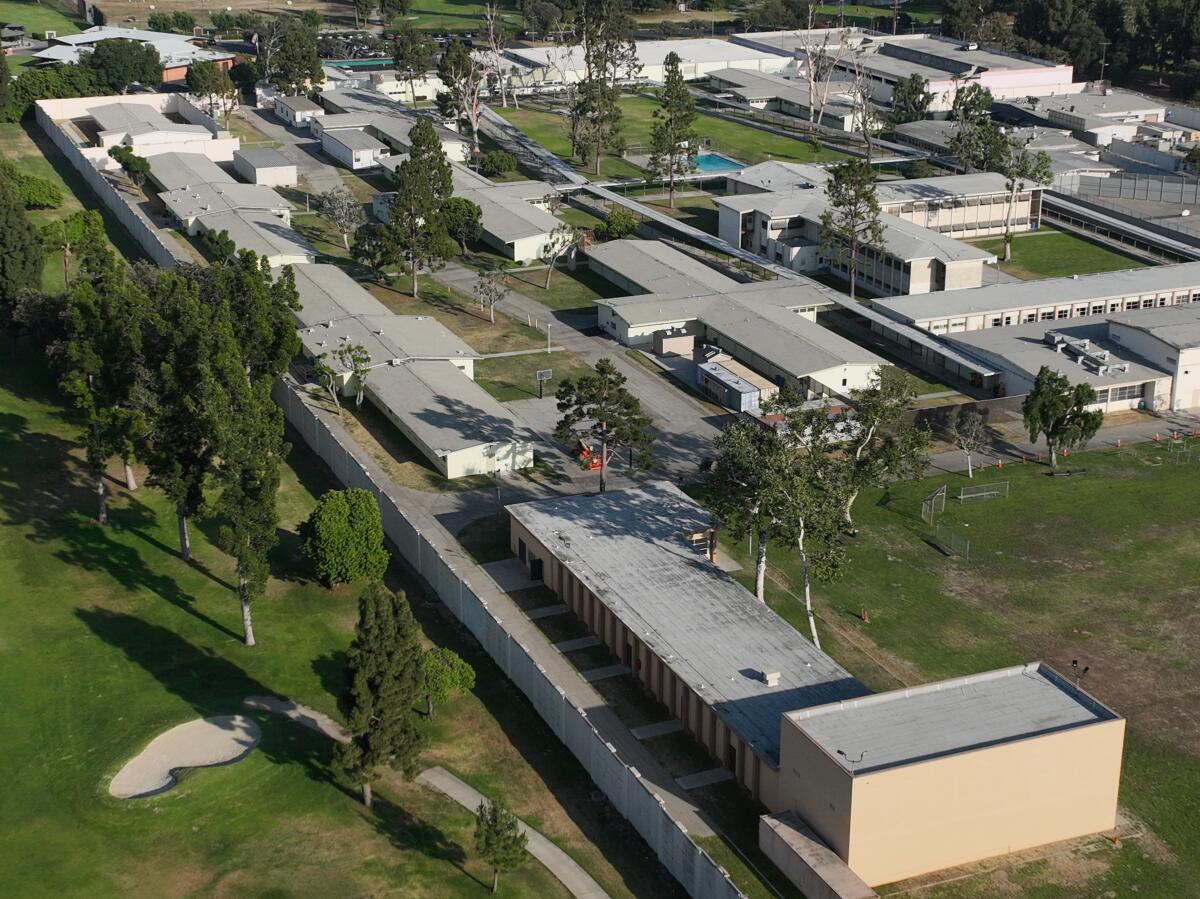
A state oversight board may vote on Thursday to shut down Los Padrinos Juvenile Hall in Downey if it finds it unsuitable for holding young people accused of crimes. It’s a maddeningly familiar situation.
Los Padrinos closed in 2019 after a long history of safety and oversight failures. But the Los Angeles County Probation Department pressed it back into service last year after the Board of State and Community Corrections found both of the county’s remaining halls, Central Juvenile Hall in Lincoln Heights and Barry J. Nidorf Juvenile Hall in Sylmar, unsuitable (except for a portion of Nidorf over which the board had no jurisdiction then, but does now).
The move did not improve conditions for the county’s young wards. In the nearly nine months since Los Padrinos reopened, there have been escapes, drug overdoses, lockdowns, attacks on staff and beatings, allegedly including a fight that was set up by members of the staff who are supposed to keep the teens safe. One juvenile at Nidorf died of an overdose.
L.A. County does need a juvenile justice bill, but a very different one that would authorize rehabilitation services within its new Department of Youth Development.
The county is treating its juvenile wards as if they were the pea in one of those sleight-of-hand games in which unwitting players keep checking under the wrong shell. For example, two years ago the Probation Department tried to thwart a state inspection of Nidorf by quickly busing all of its juvenile residents to Central. It moved them back once the inspectors were gone. The ploy merely delayed the inevitable closure.
Guillermo Viera Rosa was a member of the state board at the time, and he stepped down to become L.A. County’s chief probation officer. If anyone could figure out how to get the Probation Department to finally comply with board standards, surely he could.
Los Angeles County juvenile halls have been cited for unconstitutionally poor conditions for decades. It’s too late to save them.
No knock on Viera Rosa, but he can’t — because nobody can. Emptying Central and practically emptying Nidorf and moving the young residents to Los Padrinos was just another shell game that has now been exposed. No juvenile detention facility operated by the Los Angeles County Probation Department can consistently meet the needs of troubled youth. The next step is unclear.
The state board inspects the buildings, but the problems are not in the walls, the wiring or the plumbing. They are in the department that manages them, and in a succession of labor agreements, work practices and civil service rules that block change. Because of organizational dysfunction going back three decades, the department has an enormous payroll but too few employees who actually show up to work to provide security, education and rehabilitation. It also has an assortment of virtually empty juvenile probation camps. Last year the county gave one of them away. For free.
The County Board of Supervisors have shown they can’t fix the facilities — and should not fight their closure now.
The dysfunction also means the department is unable to keep juveniles in its charge safe. Fights were common in several now-closed probation camps in the 1990s and early 2000s. Lawsuits allege rape and sexual relationships between staff and wards at many facilities, including Los Padrinos.
A succession of chief probation officers was hired over the last quarter-century who vowed to change the culture, but each soon quit or was run out of town by probation workers.
The reported death at a Los Angeles County detention center in Sylmar is further evidence of the county’s inability to responsibly run its juvenile halls.
Viera Rosa was probably surprised to find how deep the department’s troubles run. He asked his former state board colleagues last week for more time to whip the department into shape.
That would make sense if the problems dated back only to the beginning of the pandemic, or to the state’s ill-considered program to close its Division of Juvenile Justice so the counties no longer had any place to send their toughest cases. But correcting Probation Department misconduct and disorder has been on the county’s to-do list since at least the 1990s.
The situation is reminiscent of one of the county’s most spectacular disasters — the meltdown of Martin Luther King Jr./Drew Medical Center, appropriately nicknamed “Killer King.” The Board of Supervisors ignored signs of staff misconduct and patient mistreatment for years. By the time the supervisors got serious about fixing the problems, the dysfunction was locked in and no number of reorganizations, firings, retrainings or new directors could rescue the hospital.
A Times investigation finds King/Drew far more dangerous than the public knows. Community pride, timid county leadership stand in the way of a remedy.
Nor could they protect the patients who came for medical care but instead died or suffered grievous injury because vital signs were missed, medication improperly administered, emergency rooms left filthy and resident doctors left unsupervised. The hospital failed inspections by the U.S. Centers for Medicare and Medicaid Services but federal authorities feared the political ramifications of shutting it down. But ultimately there was no choice, funding was cut off and the medical center closed in 2007.
Juvenile probation’s crisis today is distressingly similar to King/Drew’s two decades ago. It has blown its second, third, 20th chances. Not only is it failing to rehabilitate juveniles in trouble (which is its only reason for being), it is actively harming them. It keeps hanging on because no one has figured out who would take responsibility for the several hundred youths if the county’s juvenile facilities are condemned as unsuitable.
If there’s a secret contingency plan, it’s time to make it public. And if there’s not, the county and the state better hurry up and make one. This shell game has to end.
More to Read
A cure for the common opinion
Get thought-provoking perspectives with our weekly newsletter.
You may occasionally receive promotional content from the Los Angeles Times.
